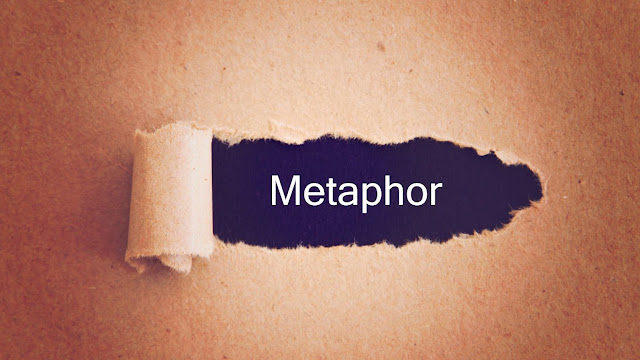We all use simple metaphors in our writing.
But not everyone uses extended metaphors or even understands them, so let’s look at the definition of an extended metaphor first.
What is an Extended Metaphor?
An extended metaphor is a literary device that takes a single metaphor and expands it over several lines, sentences, or even an entire piece of writing.
Unlike a simple metaphor, which might compare one thing to another in a single statement, an extended metaphor develops the comparison in greater detail, weaving it into the narrative or argument.
Think of it as painting an intricate picture with words, layering meaning and imagery to deepen the reader's understanding and engagement.
Why Use Extended Metaphors?
Extended metaphors are powerful tools for writers because they:
Create Depth: They allow you to explore an idea or emotion more thoroughly, adding layers of meaning to your writing.
Engage Readers: A well-crafted extended metaphor can capture the reader's imagination and hold their attention.
Unify Themes: By linking different parts of your work to a single metaphor, you create cohesion and resonance.
Simplify Complex Ideas: They make abstract or complicated concepts easier to grasp by anchoring them in familiar imagery.
Tips for Creating and Using Extended Metaphors
#1. Start with a Strong Core Idea.
Begin with a single, vivid metaphor that resonates with your theme.
For example, if you’re writing about a creative journey, you might compare it to planting and tending a garden.
#2. Develop the Metaphor Gradually.
Once you have your core metaphor, expand it piece by piece.
In the garden example, you could describe planting seeds (starting an idea), watering the plants (nurturing creativity), and dealing with weeds (overcoming obstacles).
#3. Stay Consistent.
Keep the metaphor’s imagery and logic consistent.
Mixing unrelated elements—like suddenly shifting from a garden to a spaceship—can confuse readers and weaken your writing.
#4. Use Sensory Details.
Bring the metaphor to life with vivid descriptions.
Engage the senses by describing sights, sounds, smells, tastes, and textures that align with your chosen image.
#5. Connect to Emotion.
Great extended metaphors evoke emotion.
Don’t just describe the garden; make readers feel the joy of new blossoms or the frustration of unexpected storms.
#6. Avoid Overdoing It.
While extended metaphors can be powerful, they should never feel forced or overused.
Know when to step back and let the narrative speak for itself.
#7. Tailor the Metaphor to Your Audience.
Choose imagery that resonates with your readers.
For example, a metaphor about cooking might connect with food lovers, while a sports metaphor might resonate with athletes.
#8. Tie It Back to Your Message.
Ensure your extended metaphor reinforces the central theme or argument of your piece.
Every element should serve the larger purpose of your writing.
Examples of Extended Metaphors
The Writing Process as Sailing a Ship: Writing is like navigating a ship through uncharted waters. The blank page is the open sea, full of potential and uncertainty. Your ideas are the wind filling the sails, and your revisions are the course corrections that keep you on track. Storms (self-doubt) and calm waters (writer’s block) test your perseverance, but with determination, you eventually reach the shore of a finished draft.
Life as a Puzzle: Life is a giant jigsaw puzzle. Each moment is a piece, and some fit together easily while others take time to place. Sometimes, you feel like you’re missing pieces, but with patience and perspective, the full picture begins to emerge.
Practice Makes Perfect
If you want to get better at creating extended metaphors, try this simple exercise:
#1. Pick a common concept or emotion (e.g., love, success, failure).
#2. Choose a concrete image or idea to compare it to (e.g., a mountain, a river, a marathon).
#3. Write a paragraph or two exploring the metaphor, expanding on how the two ideas connect.
Using extended metaphors is a powerful way to elevate your writing.
It can help you captivate your readers, communicate complex ideas with clarity, and leave a lasting impression.
So, the next time you sit down to write, don’t just tell your story—paint it with an extended metaphor and watch your words come alive.
And, for more writing tips, be sure to visit writebythesea.com and get your free subscription to The Morning Nudge.
Once you're a subscriber, you'll also have access to a Private Resource Library for Writers.
Suzanne Lieurance is the author of over 35 published books, a freelance writer, and a law of attraction coach for writers.



.png)


.jpg)





